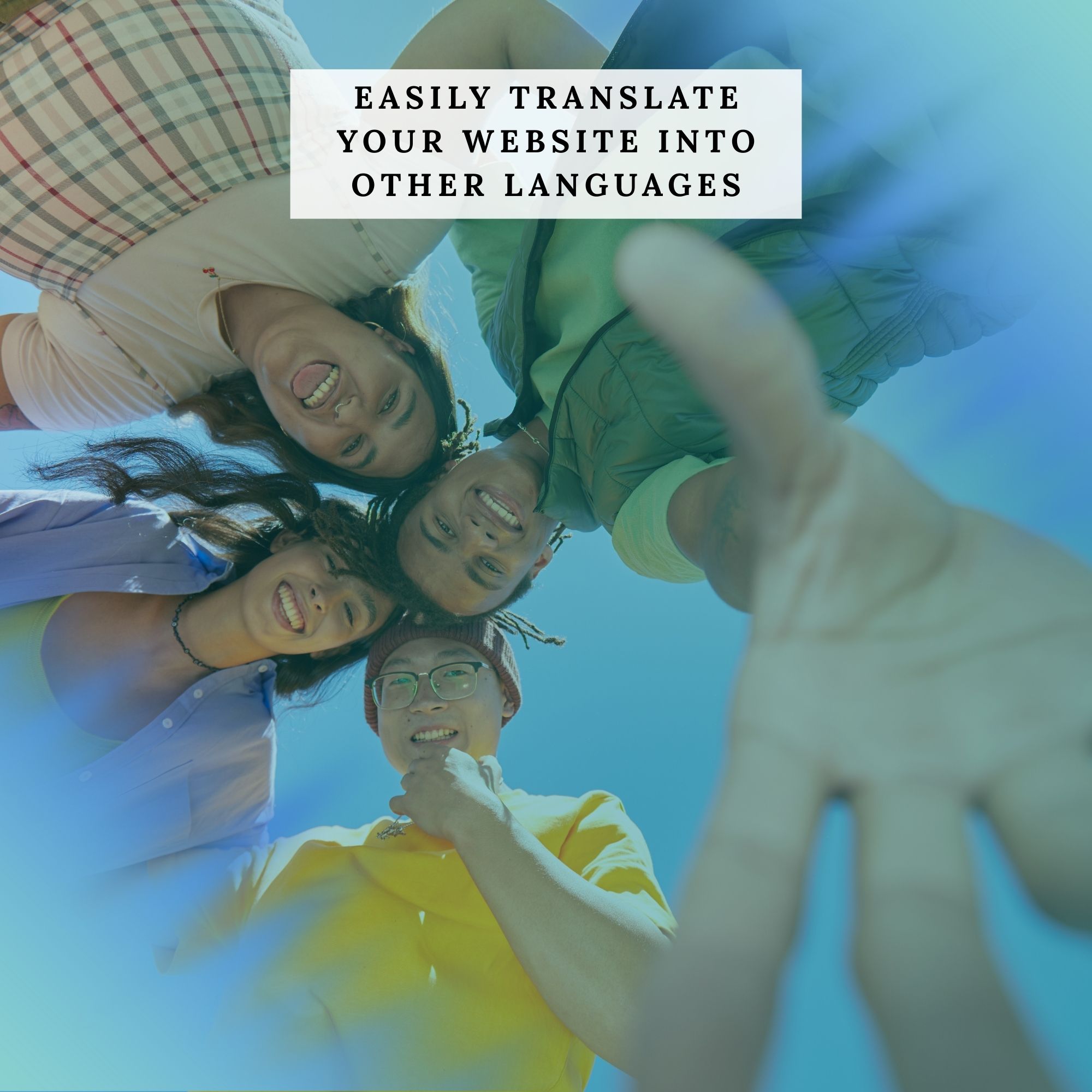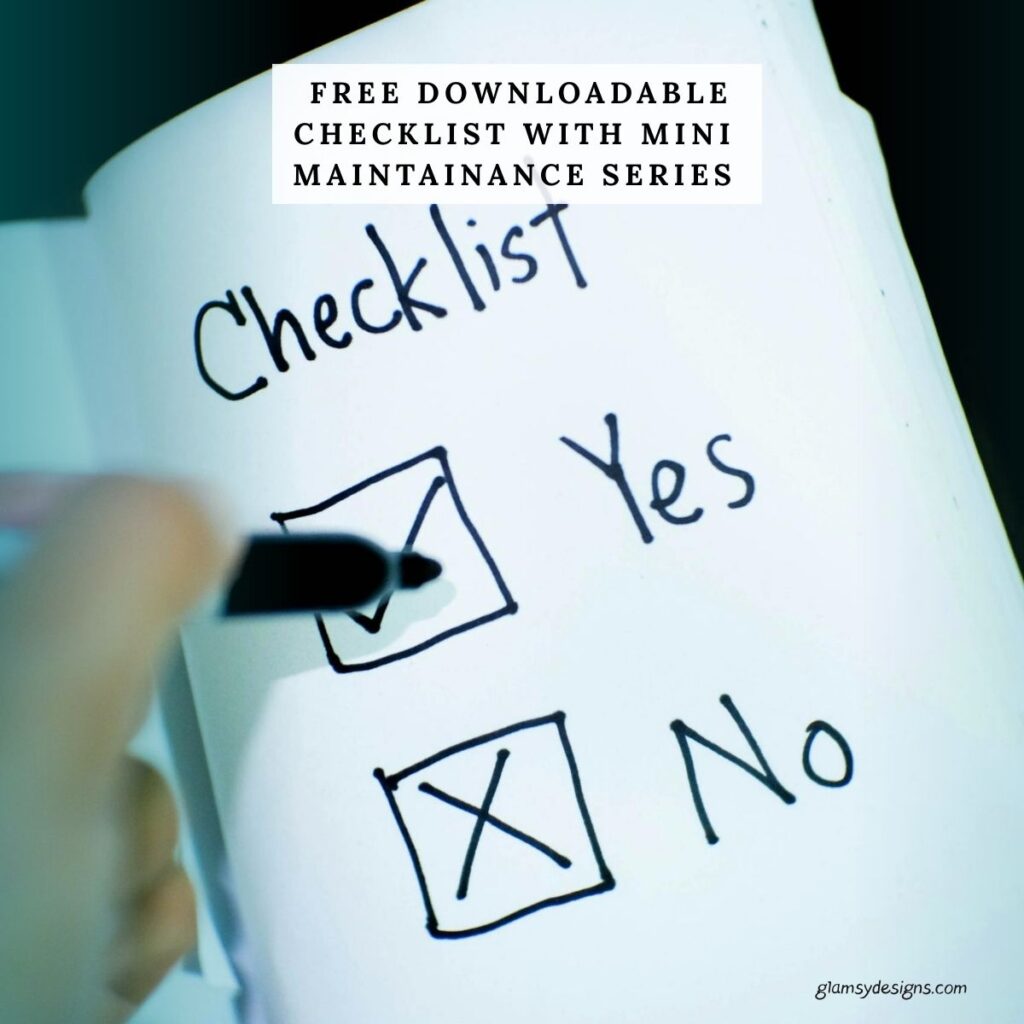Let’s Translate Your WordPress Theme
In this guide, we’ll walk you through how to translate your WordPress theme, step by step. You don’t need to be a developer or install a complicated plugin (unless you want to). Most of the content—like pages, posts, and widgets—can be translated right inside your dashboard. No fuss!
And if you want to go even further, we’ll show you the best plugins for creating a multilingual site that supports more than one language at a time. This is good news!
While some themes come pre-translated out of the box — which is a huge bonus — chances are the one you’ve chosen (and love) doesn’t. So, what happens next?
Let’s get started to find out more…
Why Translate Your WordPress Theme?

Translating your website isn’t just about changing the language — it’s about connection. Whether you’re sharing recipes, selling digital products, or growing a personal brand, making your content available in someone’s native language helps you build trust and reach more people.
Even if your site is mainly in English, you might have visitors from other countries who feel more comfortable reading in their own language. Translating key parts of your theme — like your homepage, menus, and blog posts — can make a big difference in how your message is received.
🗣It’s also kind of cool to be able to change pages into different languages — people love it!
A translating your website can also help you:
We decided to write this guide because a few of our theme customers asked about translating their sites, and we remember wishing we had a simple guide like this when we were starting out ourselves. If that’s you — someone who just wants a clear, beginner-friendly walk-through — we hope this post saves you time and gives you the confidence to do it easily.
🗣If you’re wanting your website in a language other than English or whatever your native language is, you need to make sure that the theme you purchase is translation-ready. The good news is Kadence is translation-ready and so are our themes – check out our designs.
Changing the WordPress Dashboard Language
Before we dive into translating the content on our site, let’s start with the WordPress dashboard itself. This is the admin area where everything is managed — pages, posts, widgets, plugins, and more. Changing the dashboard language can make the whole editing process easier, especially if English isn’t your readers first language.
To change the WordPress dashboard language:
- Go to Settings > General in your WordPress dashboard.
- Scroll down to the Site Language option.
- Choose your preferred language from the dropdown list.
- Click Save Changes at the bottom of the page.
That’s it! The WordPress interface — menus, labels, and settings — will now appear in the language selected. This doesn’t change the content of your site (like posts or page text), but it’s a helpful first step before moving on to translating what visitors actually see.
Translating Pages, Posts, & Widgets

After updating the WordPress dashboard language, the next step is translating the content that visitors actually see — including pages, posts, and widget areas. Most of this can be edited directly in the WordPress admin area without any additional tools.
Translate Your WordPress Theme Pages
To translate a page, go to Pages > All Pages and click Edit on the page that needs translating. Replace any English text with the translated version, then click Update to save. If using a block editor like Gutenberg or Kadence, it’s easy to update headings, paragraphs, buttons, and other block content right on the page.
Translate Your WordPress Theme Posts
Blog posts can be translated the same way. Navigate to Posts > All Posts, open each post by clicking Edit, and translate the text and title. Post titles are especially important, since they often appear in search results, on archive pages, and in navigation menus.
Translate Your WordPress Theme Categories
To update category names and descriptions, go to Posts > Categories and click Edit on each one. Change the Name and Description fields to the translated versions. This ensures the blog’s category structure matches the translated content across the site.
Translate Your WordPress Theme Widgets
Widgets are managed under Appearance > Widgets. Many themes include custom widget areas labeled something like “Front Page 1,” “Front Page 2,” and so on. Open each widget, update any English content, and save the changes. Be sure to also check footer and sidebar widget areas, as these often contain key information like contact details, taglines, or newsletter signups.
Taking time to translate these areas helps create a consistent, welcoming experience for multilingual visitors — and keeps the overall site looking polished and professional.
These simple edits go a long way in making your site more accessible and welcoming to a broader audience — and they only take a few clicks.
💡 Tip: Before replacing the original English content, it’s a good idea to keep a backup. Copy and paste the original text into a separate docsument so it’s easy to switch back or reference later if needed. This is especially helpful when updating multiple pages or when working in multiple languages.
Translating Navigation Menus
Navigation menus are one of the first things visitors interact with, so it’s important they’re clear and consistent with the rest of the site’s language. The good news? If the page and category titles have already been translated, the menu may update automatically. But if something still looks out of place, it’s easy to update manually.
Translate your WordPress theme menu:
- Go to Appearance > Menus
- Select the menu you want to edit
- Update any page titles, custom links, or category names that still appear in English
- Click Save Menu
That’s it — just a few quick clicks, and the menu is ready to guide visitors in the right language.
🤔 Not sure which menu to edit? If there are multiple menus (like a primary, footer, or mobile menu), hover over each to preview where it appears on the site. It’s a little like a scavenger hunt, but way less frustrating.
If your theme uses custom buttons or icons in the menu (like “Read More,” “Shop Now,” or a language switcher), those might need a little extra attention. Check if they’re part of the menu structure itself or added through theme settings or a header builder.
Getting the navigation right makes the entire site feel polished — and helps visitors move around with ease, no matter which language is spoken.
🗣 Planning a multilingual site?
If the site will support multiple languages, it’s possible to create separate menus for each one. Some translation plugins (like Polylang or Weglot) allow assigning different menus based on the visitor’s selected language. We’ll cover that in a later section — but it’s good to know the option is there if needed.
Translating Buttons and UI Text (like “Read More”)
Even after translating the main content, there’s always a little leftover text that likes to hide in plain sight — like the “Read More” button, post navigation links, or those little phrases built into the theme. These are known as UI text (user interface text), and they’re usually controlled by the theme itself.
So how do you translate them?
The first place to check is your Customizer. Go to Appearance > Customize and look through the different sections — especially anything labeled “Blog Settings,” “Post Settings,” or “Theme Options.” Some themes let you change button text like “Read More,” “Continue Reading,” or “Leave a Comment” right there in the settings.
If the text isn’t editable from the Customizer, it may be hardcoded into the theme. That’s when a translation plugin comes in handy (we’ll cover those soon). For now, just make a note of any UI text that still needs translating — it’ll be easier to locate and update once the right tools are in place.
🗣 Quick Tip: Some block-based themes (especially ones built with Kadence or Gutenberg) let you edit button text directly inside the block itself. Just click on the button and type in your translation — no settings required.
These small text tweaks might seem minor, but they make a big difference in making the site feel truly localized and thoughtfully designed.
Translating Other Theme Elements (404 Pages, Comments, and More)
Some parts of a WordPress theme fly a little under the radar — until a visitor stumbles across them. Think of things like the 404 page, the comment section, or post meta text (like “Posted by” or “Leave a reply”). These often don’t show up in the block editor or Customizer, but they still play a big role in the site’s overall experience.
Since this type of text is usually hardcoded into the theme files, the easiest way to translate it is with a plugin designed for the job.
Recommended Translation Plugin
For single-language translations (where you’re just changing English to one other language), Weglot is a fantastic option. It detects text automatically and allows you to translate everything from menus to form labels to footer messages — even system messages like “No posts found” or “Nothing here yet.”
⚠️ Note: One plugin we don’t recommend is WPML. It tends to break formatting in flexible widgets, which can really throw off your design.
What to Watch For
Here are a few commonly overlooked elements that may need translating:
Once a plugin is active, it will typically scan your theme and let you update these bits of text directly in a visual editor or translation table — no code needed.
🗣If your site is only in one language, this step helps polish the edges. If you’re going multilingual, it becomes essential for a smooth and professional experience across the board.
Difference Between Weglot Free & Pro

Weglot is one of the easiest and most beginner-friendly translation tools out there — and it works beautifully with most WordPress themes. Whether you’re just translating your site into one language or creating a fully multilingual experience, Weglot handles most of the heavy lifting for you compared to other plugins.
Free Version
Weglot’s free plan lets you translate up to 2,000 words into one additional language, which is perfect for smaller websites or those just getting started. Setup is quick: install the plugin, create a free Weglot account, and select your desired language. Within minutes, your site will be viewable in both languages, complete with a front-end language switcher.
It’s a great way to test things out and see if a multilingual site fits your needs — no pressure, no upfront cost.
Pro Paid Plans
If your site is larger or you need more than one language, you’ll want to look at Weglot’s paid plans. These unlock higher word limits, access to more languages, and some handy pro features like:
The Pro plans also let you fully customize how your language switcher appears — so it fits seamlessly into your site’s design.
🗣 Quick Note: Weglot is a hosted service, which means your translations are stored on their servers rather than in your WordPress database. This is a super big bonus because it keeps your site fast and lean. This is worth noting if you’re aiming for a fully self-hosted solution.
Creating a Multilingual Site & Language Switchers
So far, we’ve looked at how to translate your WordPress theme into a single language — but what if you want to go a step further and make your site available in multiple languages? That’s where things get multilingual, and tools like Weglot, Polylang, or TranslatePress come into play.
These plugins don’t just swap out words — they build full versions of your site for each language, and they do it in a way that’s organized, user-friendly, and SEO-friendly too.
How it Works
Multilingual plugins allow you to:
✨ A language switcher is usually a small dropdown or button on your site — often in the header, menu, or footer — that lets visitors choose their preferred language. Most plugins let you customize how it looks and where it appears. For a great example, check out Weglot’s website top menu.
Plugin Options
Here are a few popular multilingual plugins that work well with modern WordPress themes:
Each of these tools allows you to create separate pages, posts, and menus per language — so everything stays tidy behind the scenes and intuitive on the front end.
Is a Multilingual Site Right for You?
A multilingual site is especially useful if:
It takes a bit more setup than a single-language site, but the potential to grow your audience and serve users more effectively can make it well worth the effort.
Common Mistakes to Avoid When Translating a WordPress Theme
Translating a WordPress theme might sound simple — and most of the time, it is — but there are a few easy-to-miss mistakes that can cause issues down the road. Whether you’re translating manually or using a plugin, keeping an eye out for these will save you time and frustration.
1. Editing Theme Files Directly
It might be tempting to jump into your theme’s files and change the English text to another language — but don’t do it. Any changes made directly to the theme files will be overwritten the next time you update the theme. Instead, always use a translation plugin or the Customizer where possible.
2. Forgetting to Back Up Your Original Text
Before replacing English text with a translation in a widget, page, or post — it’s smart to keep a copy of the original. That way, if you ever want to switch back or compare phrasing, you’re not scrambling to remember what was there.
💡 Quick Tip: Paste the original English into a private draft or local docsument before editing. It’s a small step that can save a big headache later.
3. Mixing Languages in the Same Widget or Page
Unless you’re going for a very specific look, try not to mix multiple languages in a single widget or page. It can confuse readers and make the site look inconsistent. Aim to keep each element fully translated for a polished, user-friendly experience.
4. Overlooking SEO
If you’re building a multilingual site, don’t forget about search engine optimization. Some translation plugins handle multilingual SEO for you (like Weglot), but others may require a little manual tweaking. Make sure your translated pages have relevant titles, meta descriptions, and slugs in the target language.
5. Using Plugins That Conflict with Your Theme
Not all translation plugins play nicely with every theme — especially if your theme uses flexible content blocks or custom widget areas. Always test translations on a staging site if possible, and avoid plugins known to break layouts (we’re looking at you, WPML 😬).
Final Thoughts: You’ve Got This!
Translating your WordPress theme might feel a little technical at first — but once you get the hang of it, it’s surprisingly smooth. Whether you’re translating your entire site into one language or making it fully multilingual, you’ve now got a solid roadmap to follow.
The great news? You don’t have to be a developer or tech whiz to make your website more accessible to a global audience. With just a few clicks and the right tools, you can offer your content in the language your readers feel most at home with — and that builds real connection.
We created this guide because we’ve been in your shoes. Translating themes wasn’t always straightforward, and we found ourselves piecing together bits of information from all over the place. So if this article saves you even half the time it took us to figure it out — that’s a win. 🙌
🗣 Need a hand? If you’re using one of our themes and run into a translation snag, don’t hesitate to reach out. We’re always happy to help.
JoiN Glamsy Cloud Free!
Start with 20 gorgeous Kadence blocks on us. Love them? Unlock ‘FREE FOREVER‘ 50 more block collections just by choosing any essential tool from our trusted stack!
FAQs: Translate Your WordPress Theme
Disclaimer: Glamsy Designs shares this guide for learning only and cannot be held responsible for issues that may occur. While we strive to provide accurate and helpful advice, Glamsy Designs is not responsible for any issues, damages, or data loss that may occur as a result of following this guide. It is always recommended to back up your website.








